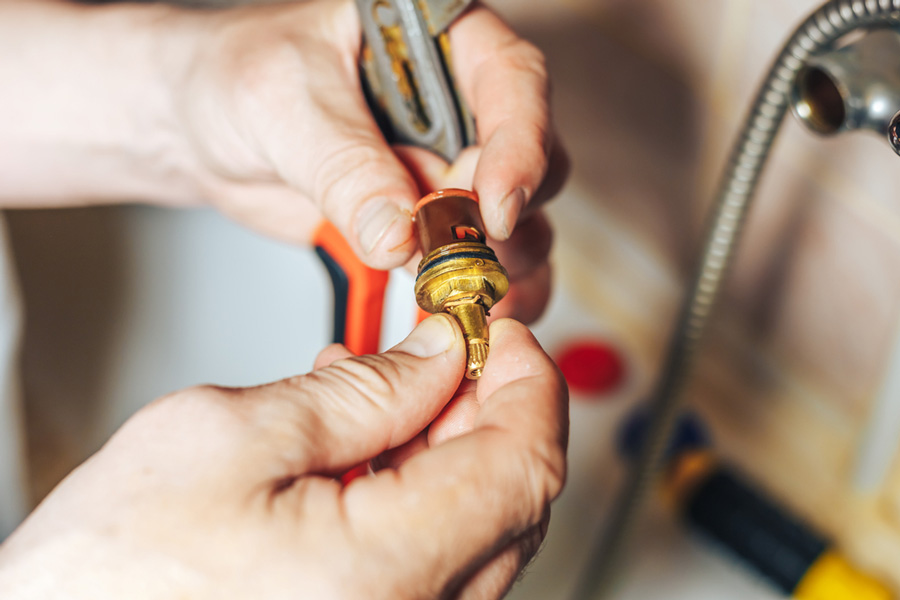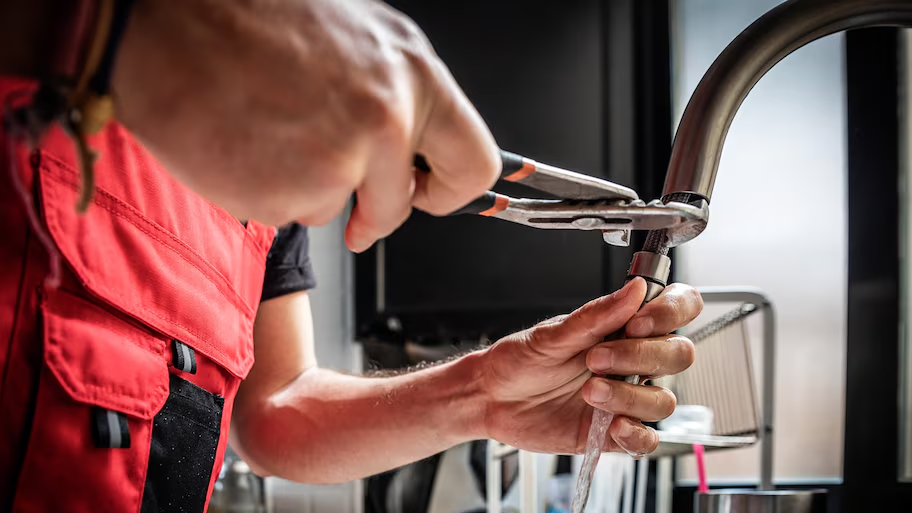An Benefits of Resolving a Faulty Faucet
An Benefits of Resolving a Faulty Faucet
Blog Article
What're your opinions concerning 4 Common Reasons for a Leaky Faucet?

Dripping taps might look like a small inconvenience, but their impact goes beyond just the nuisance of the noise. From wasting water to incurring unneeded economic expenses and wellness risks, neglecting a dripping faucet can result in different repercussions. In this post, we'll delve into why it's vital to address this typical family issue quickly and effectively.
Wastage of Water
Ecological Impact
Dripping faucets add significantly to water wastage. According to the Epa (EPA), a solitary faucet trickling at one drip per secondly can squander greater than 3,000 gallons of water each year. This not only strains water sources but likewise impacts environments and wild animals depending on them.
Step-by-Step Overview to Dealing With a Dripping Tap
Devices Called for
Before trying to take care of a trickling faucet, collect the needed devices, consisting of a flexible wrench, screwdrivers, substitute parts (such as washers or cartridges), and plumber's tape.
Typical Tap Issues and Their Solutions
Identify the sort of faucet and the specific problem triggering the drip. Common problems consist of worn-out washing machines, rusty shutoff seats, or malfunctioning O-rings. Describe manufacturer guidelines or on the internet tutorials for detailed assistance on repair work.
Financial Expenses
Raised Water Expenses
Beyond the environmental impact, dripping faucets can pump up water expenses considerably. The accumulated waste over time equates right into greater utility expenditures, which could have been avoided with timely repair services.
Prospective Residential Or Commercial Property Damages
Furthermore, long term leaking can cause damage to components and surfaces bordering the tap. Water buildup can cause staining, rust, and even architectural concerns if left unattended, causing additional repair prices.
Wellness Concerns
Mold And Mildew and Mildew Development
The consistent visibility of dampness from a leaking tap develops an optimal setting for mold and mold growth. These fungi not just jeopardize interior air top quality yet also present wellness risks, specifically for individuals with respiratory system conditions or allergies.
Waterborne Illness
Stationary water in dripping taps can become a breeding place for germs and other microorganisms, enhancing the danger of waterborne illness. Impurities such as Legionella germs flourish in stagnant water, potentially causing major diseases when ingested or breathed in.
Do it yourself vs. Professional Repair service
Benefits and drawbacks of DIY Repair
While some might attempt to repair a leaking faucet themselves, DIY repairs feature their own collection of difficulties. Without correct expertise and tools, DIY efforts can intensify the issue or result in incomplete repair work, extending the problem.
Benefits of Working With a Specialist Plumber
Employing an expert plumber ensures that the underlying reason for the leaking faucet is resolved successfully. Plumbing professionals possess the experience and equipment to identify and fix faucet concerns effectively, conserving time and reducing the danger of more damage.
Environmental Obligation
Private Contribution to Preservation
Taking obligation for repairing trickling taps aligns with wider efforts towards water preservation and environmental sustainability. Every person's activities collectively make a substantial impact on protecting valuable sources.
Lasting Living Practices
By prioritizing timely repairs and embracing water-saving practices, individuals add to lasting living techniques that profit both existing and future generations.
Safety nets
Routine Upkeep Tips
To avoid leaking faucets, perform regular upkeep such as cleaning aerators, evaluating for leakages, and replacing worn-out parts quickly. Furthermore, take into consideration mounting water-saving gadgets or updating to more effective components.
Significance of Prompt Repairs
Dealing with dripping faucets as soon as they're seen stops additional water waste and prospective damage, ultimately saving both water and money in the long run.
Influence On Residential Property Value
Understanding of Well-Maintained Home
Maintaining a building in good condition, consisting of resolving maintenance problems like trickling taps, enhances its viewed value and desirability amongst possible buyers or renters.
Influence on Resale Worth
Characteristics with well-kept plumbing fixtures, consisting of faucets, command higher resale values in the real estate market. Resolving leaking taps can contribute to a favorable impression during property inspections and arrangements.
Verdict
Dealing with a trickling tap goes beyond simple comfort; it's an essential action toward saving water, decreasing monetary prices, and securing health and wellness and residential or commercial property. Whether through do it yourself repair services or professional aid, doing something about it to fix dripping taps is a small yet impactful method to advertise responsible stewardship of sources and contribute to a healthier, a lot more sustainable future.
How to Fix a Leaky Faucet: Step-by-Step Repair Guide
A leaky faucet may seem like a simple annoyance, but if it's not fixed promptly, that leak could cost hundreds to potentially thousands. From water damage to mold, mildew, and high water bills, even a tiny leak can be catastrophic if left unattended. Damage like this can even affect the overall value of your home, so it's important to take the right approach for leaky faucet repair. You may need the help of a plumber in some cases, but we've got a few tips you can try on how to fix a leaky faucet before calling the pros.
Four Faucet Types
When you're learning how to fix a leaky faucet, the first step is knowing what kind of faucet you're working with! There are four common types.
Cartridge Faucets
Cartridge faucets come in one- or two-handled varieties. In one-handled cartridge faucets, hot and cold water combines in a single cartridge. In the two-handled versions, hot and cold water are controlled separately and mixed in the faucet.
Ball Faucets
Ball faucets have a single lever you push up and down to adjust the pressure and rotate to change the temperature. A slotted metal ball controls the amount of water allowed into the spout.
Compression Washer Faucets
They're the oldest type of faucet, but they're still used in many homes — especially older ones. Compression faucets have two separate handles that, when turned, raise or lower the washer that seals a water valve. This valve stops water from flowing through the faucet when it is turned off.
Disc Faucets
Disc faucets rarely need to be repaired due to their maintenance-free design. The water flow is controlled by two discs — the upper one raises and lowers against a fixed lower disc, creating a watertight seal. If your disc faucet starts leaking, you may need to replace the seals or clean residue buildup from the inlets.
Fixing a Leaky Faucet
Step 1: Turn Off the Water
Whether you're learning how to fix a leaky bathtub faucet or how to fix a leaky kitchen faucet, always turn off the water supply to your working area when you're fixing a leak. The last thing you want is a flood added to your list of things to fix.
Look for the shutoff valves below your sink or around the tub and turn them clockwise to stop the water flow. If your faucet doesn't have shutoff valves, you may need to turn off the water for the whole house. Check to make sure it's off by turning the faucet on. If nothing comes out, you're ready to start the repair.
Step 2: Take Apart the Faucet
How you disassemble your faucet depends on the type of fixture you have. You can use a flathead screwdriver to remove the caps on top of the handle or handles for cartridge and compression faucets. Inside, you should see handle screws. Unscrew these with a screwdriver to remove the handle.
Disc- and ball-style faucets will typically have an inlet screw near the handle, and removing that will reveal the interior of the faucet.
Detach the Valve Stem
For cartridge- and compression-style faucets, you'll see the inner valve stem or cartridge once you remove the faucet handles. If you have a compression faucet, unscrew the brass valve stem. If you have a cartridge faucet, pull out the cartridge. If your cartridge has been in place for a while, it may require some tools or extra force to remove it due to mineral deposits.
Examine and Replace Parts
Once you've removed the parts, check them out to confirm what needs to be replaced. You may see corroded rubber washers, O-rings, stems, or cartridges. On a ball-style faucet, check the seats and springs for damage.
If you need to repair a leaky disc faucet, check the inlet and seals on the lower disc.
Once you determine what parts must be replaced, visit your local hardware store. Bring the damaged parts with you to ensure you can purchase the correct components to replace them.
Clean Valves and Faucet Cavity
If you've removed a stem or cartridge, you may notice mineral buildup in the faucet's threads. Use white vinegar to clean the valve seat by soaking it for a few minutes, then scrub it away with a soft toothbrush and rinse with warm water. You can also clean the interior of the faucet in the same way.
Reassemble the Faucet
Once your faucet is cleaned and the required parts have been replaced, it's time to reassemble it. Put the pieces back together and slowly turn the water supply back on. Doing this slowly is crucial because too much initial water pressure can damage the new hardware you've just installed.
https://homewarranty.firstam.com/blog/how-to-fix-leaky-faucet

Hopefully you enjoyed our part about . Many thanks for spending some time to read through our piece of content. Kindly pause to distribute this blog post if you enjoyed it. We love your readership.
Report this page